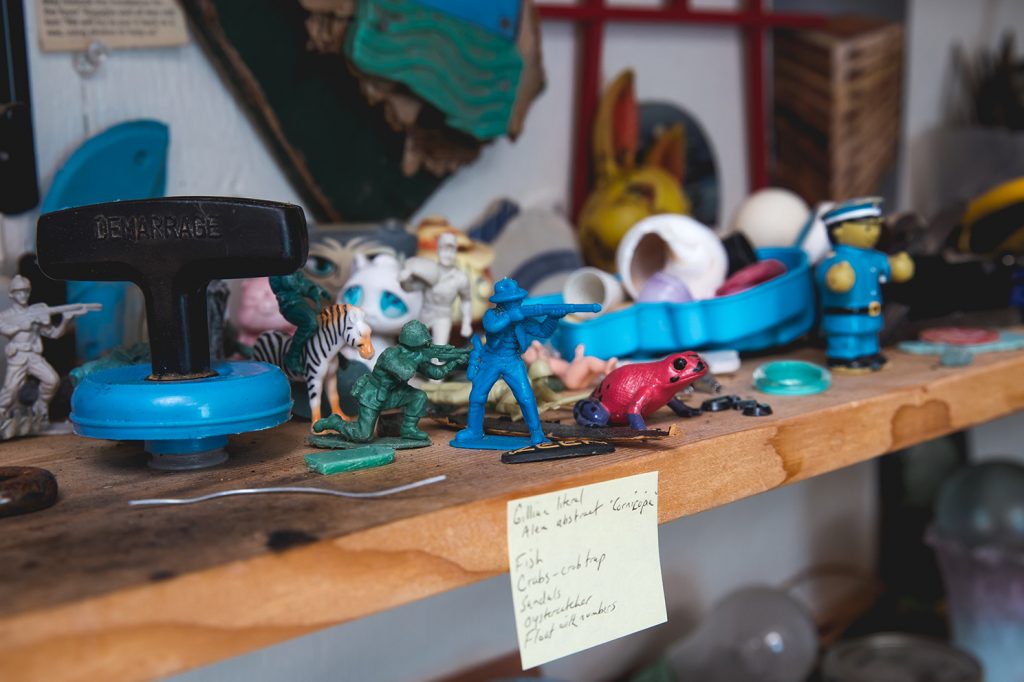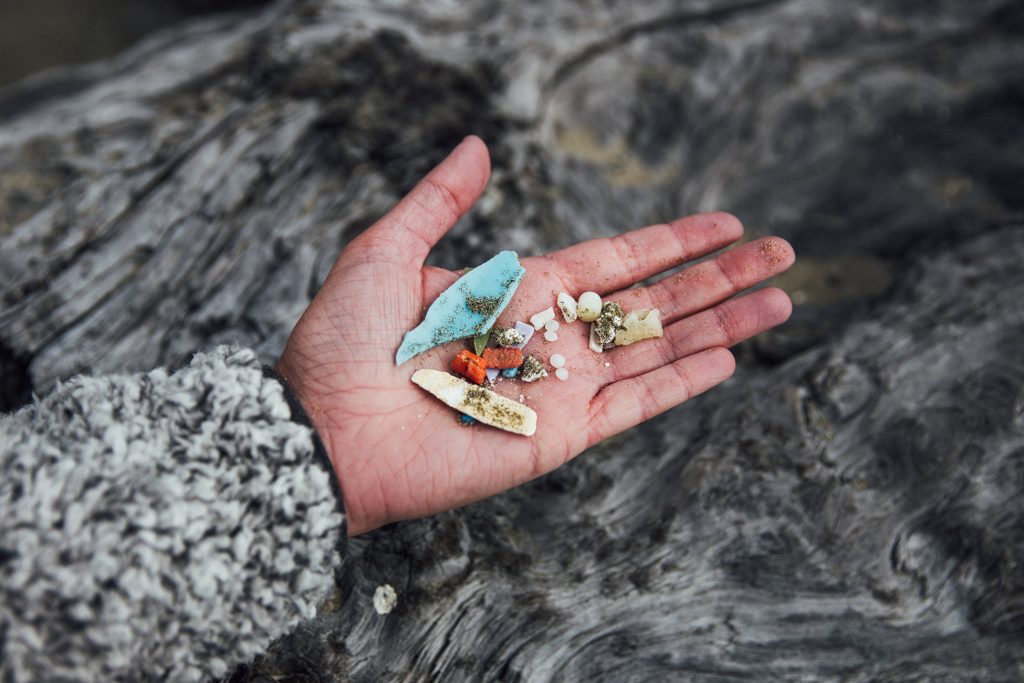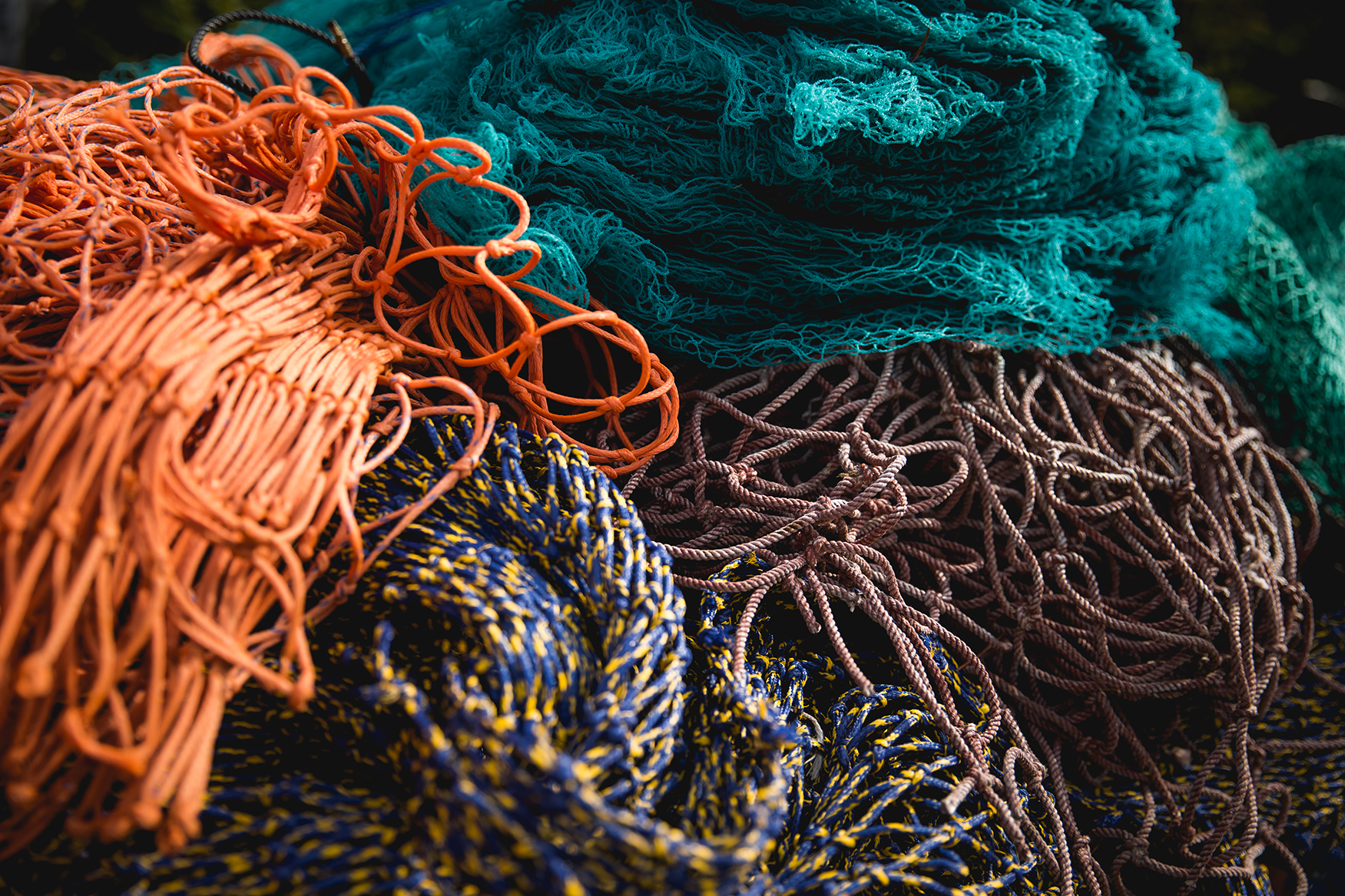Pete Clarkson’s yard is full of trash. Laundry baskets, gas cans, discarded water bottles, forgotten flip flops, plastic pallets and fishing nets rest in towering piles. There’s a method to the madness. Each piece has been lovingly cleaned and arranged by color and type. It’s actually quite … beautiful, if you can forget for a moment all of this was once marine debris washing up on the beaches of Vancouver Island’s outer coast, where Clarkson is a park warden.
It’s summer — tourist season — when I visit Clarkson at his studio, where he uses these items to create large-scale art installations for aquariums, zoos and galleries aimed at educating the public about plastic pollution. If anything, I expect to leave my time with Clarkson even more frustrated about the way plastic waste clogs our river arteries and accumulates on our beaches. I’m surprised instead to meet a man with a deep appreciation for plastic.
As we comb through Clarkson’s collection, we come across a plastic pallet with a time-worn label written in Japanese. “I found debris from the 2011 Japanese tsunami for years,” he says, running his hand over the smoothed plastic.

In 2015, Clarkson and a group of fellow beachcombers came together as part of a project to collect, track and reunite tsunami debris with its rightful owners in Japan. A single plastic pallet could very well be the only remnant from a former life a survivor might have, a keepsake from a time before 15,000 lost their lives, multi-generational businesses were destroyed and landscapes were forever altered. It’s a beautiful story about our human connection to plastic — maybe one of the only ones.
Humans have always told stories to grapple with things we don’t quite understand, which would explain how plastic has become the villain in our modern environmental narrative. The global plastic pollution epidemic has been propelled into mainstream consciousness like never before throughout the past year. And unlike climate change, there are very few deniers of the issue: lift up any beach log and you’ll see plastic fragments, microplastics and nurdles, tiny pellets used as the raw material for plastic products. It’s a bit like taking the temperature of an ailing planet.

“If your bathtub is overflowing, do you start mopping the floor or do you turn off the tap?” says David Stover of Bureo, a company that designs and manufactures products from recycled fishing nets.
What if you can’t find the tap? Many of the “facts” that exist right now about plastic waste are actually just estimates, partly why we hear so many conflicting stats on the “largest source of marine plastic.” Plastic debris is incredibly difficult to track. Once a piece enters the ocean, it’s nearly impossible to pinpoint its origin — and that’s if we see the debris at all. Fragmentation, predation, sinking and shore deposition all make plastic less visible to researchers.
That lack of dependable data is a problem Carolyn Box is trying to solve. In partnership with the San Francisco Estuary Institute, Box and her team at 5 Gyres designed and executed a study to better understand the pathways and distribution of microplastics in the San Francisco Bay and its surrounding marine sanctuaries.
Their findings are critical, offering up the cold, hard data needed to understand the effectiveness of recent policies, such as statewide plastic bag bans, and to push the public, politicians and corporations toward solutions to stop plastic emissions at their source. During a 2012 expedition, 5 Gyres discovered plastic microbeads in the Great Lakes. Their subsequent research on their origins influenced a grassroots movement that led to President Obama signing the Microbead Free Waters Act, a ban that went into effect last year.

“I got involved with 5 Gyres when everyone was talking about a ‘plastic island,’ which was a misleading description of the plastic pollution problem,” Box says. “This points to the problem being off in a remote ocean. My research highlights that the issue starts here, in our homes and our favorite local beaches, but these stories have to be told in a way that inspires people to take action.”
If stopping plastic emissions is the best chance we have at halting ocean pollution, then the stories we weave around its origins are critical. Plastic pollution can seem both anonymous and insurmountable, easily assigned to a faceless “other” or as the responsibility of a culture half a world away. But every one of us lives and thrives in a world created by plastic. The wave-worn artifacts of its place in our society can be a poignant reminder of our global social and environmental connectedness, as well as our collective power.
“Every piece of plastic has a history, a purpose it served,” Clarkson says.
Plastic is, above all else, a human story. How do we rewrite the ending?
XX Johnie Gall
Stay up to date on 5 Gyres’ research and get involved in their citizen science projects at 5gyres.org/science. This story first appeared in RANGE Magazine Issue 11: Origins. Buy your copy HERE.
